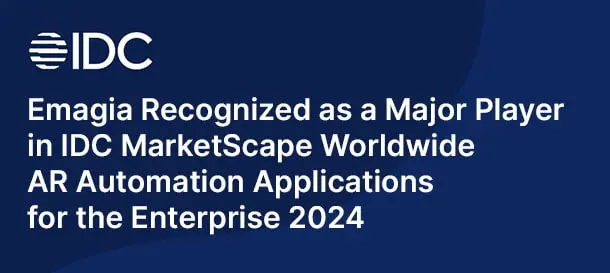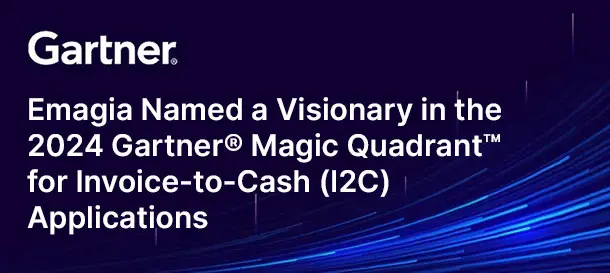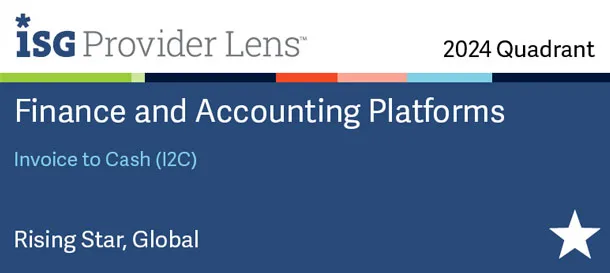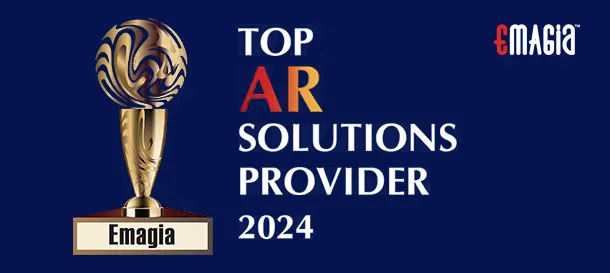Miscellaneous expenses are small, irregular, or unforeseen costs that businesses incur and do not fit into standard accounting categories. Tracking these expenses is crucial for financial accuracy, compliance, and budgeting. CFOs need clear visibility of these costs to make informed decisions and optimize working capital.
Understanding Miscellaneous Expenses
Miscellaneous expenses include minor office supplies, incidental business costs, and non-recurring expenditures. These costs, although small individually, can add up and impact financial statements if not properly tracked and managed.
Definition in Accounting
In accounting, miscellaneous expenses are operational costs recorded separately in the general ledger. Proper classification ensures transparency, compliance, and effective monitoring of business finances.
Miscellaneous Expense Meaning in Business
For businesses, miscellaneous expenses represent indirect costs that support daily operations. Examples include minor repairs, office stationery, client gifts, and small travel-related expenses.
Examples of Miscellaneous Expenses
Knowing the types of miscellaneous expenses helps CFOs categorize and control costs efficiently.
Minor Office Expenses
Office supplies, printer ink, coffee, and other minor items fall under this category.
Incidental Business Costs
Unexpected expenses such as courier charges, small equipment repairs, or ad-hoc training are included here.
Travel and Entertainment
Taxi fares, parking fees, and occasional business meals can be considered miscellaneous if they do not fit in regular travel budgets.
Irregular or Non-Recurring Expenses
Legal consultations, one-time software subscriptions, or special project costs are examples of non-recurring miscellaneous expenses.
Miscellaneous Expense Categories
Categorizing these expenses properly helps with reporting, budgeting, and compliance.
Indirect Business Expenses
Costs that indirectly support operations, such as minor utilities, software tools, or incidental services, are classified under miscellaneous.
Non-Recurring Company Expenses
Expenses that occur infrequently but affect cash flow, like special office repairs or emergency supplies, fall in this category.
Accounting and Recording Miscellaneous Expenses
Accurate recording ensures proper financial reporting and compliance.
Journal Entries for Miscellaneous Expenses
Debit the miscellaneous expense account and credit cash or accounts payable based on the payment method.
Recording Guidelines
Collect receipts, categorize correctly, and record transactions promptly in accounting software or the general ledger.
Tax-Deductible Miscellaneous Expenses
Some miscellaneous expenses, such as office supplies and client entertainment, may be deductible, depending on local tax laws.
Managing Miscellaneous Expenses
Effective management ensures CFOs maintain control and optimize small but significant costs.
Expense Tracking Best Practices
Track receipts, reconcile regularly, and categorize expenses to maintain transparency and accuracy.
Budgeting for Miscellaneous Costs
Allocate a specific budget for miscellaneous items to avoid overspending while maintaining flexibility for unforeseen costs.
Petty Cash Management
Maintain petty cash logs for frequent minor expenditures to simplify tracking and reconciliation.
Technology in Expense Management
Automation and AI tools are transforming how businesses manage incidental costs.
AI Tools for Expense Management
AI-driven platforms automate categorization, detect anomalies, and provide real-time reporting for minor expenditures.
Cloud-Based Expense Tracking
Cloud solutions allow finance teams to track expenses remotely, maintain visibility, and integrate with ERP systems for better reporting.
Smart Automation and AI Insights
Use AI to categorize, reconcile, and forecast miscellaneous expenses efficiently, reducing manual errors and enhancing control.
Budget Allocation and Control
CFOs can improve financial discipline by monitoring miscellaneous costs and allocating budgets effectively.
Expense Categorization Software
Software tools can categorize recurring and incidental expenses, enabling accurate reporting and data-driven decisions.
Monitoring and Analysis
Regularly review expense reports, analyze trends, and adjust budgets to maintain control over miscellaneous costs.
Benefits of Managing Miscellaneous Expenses
Proper management leads to improved financial accuracy, cash flow optimization, tax compliance, and operational efficiency.
2026 CFO Checklist for Miscellaneous Expenses
- Implement automated expense tracking
- Use AI for categorization and anomaly detection
- Maintain petty cash logs
- Regularly reconcile and review expenses
- Ensure compliance for tax deductions
- Allocate budget for irregular costs
- Use dashboards for real-time visibility
- Forecast and monitor trends
- Train staff on reporting and policies
- Audit and validate expense records periodically
How Emagia Streamlines Miscellaneous Expense Management
Emagia provides automation solutions for capturing, categorizing, and reporting miscellaneous expenses. With AI-driven platforms, CFOs gain real-time insights, ensure compliance, and reduce manual errors while optimizing budgets.
Real-Life Examples of Miscellaneous Expenses
Understanding specific examples helps CFOs categorize, monitor, and optimize these costs effectively.
Office Supplies and Stationery
Items such as pens, notebooks, printer cartridges, and small office gadgets are common miscellaneous expenses. Tracking these helps avoid overspending and ensures accounting accuracy.
Travel and Transportation
Taxi fares, parking fees, and occasional local transportation for employees are considered incidental costs. Proper documentation is essential for reimbursement and compliance.
Client and Employee Engagement
Small gifts, snacks for meetings, or impromptu employee recognition awards are miscellaneous expenses that support business relationships but require proper accounting.
Minor Repairs and Maintenance
Unexpected repairs for office equipment, minor software troubleshooting, or furniture maintenance fall under miscellaneous expenses.
Tracking and Managing Miscellaneous Expenses with Technology
Automation and AI tools simplify expense tracking, improve visibility, and reduce errors.
AI-Powered Expense Categorization
Modern accounting software uses AI to automatically classify expenses into categories, including miscellaneous, based on historical data and invoice descriptions.
Cloud-Based Expense Management Solutions
Cloud platforms allow remote access, real-time updates, and integration with accounting systems. CFOs can monitor expenses from anywhere and ensure compliance with financial policies.
Mobile Apps for Real-Time Recording
Employees can capture receipts and submit expenses through mobile apps. These apps sync with cloud systems, reducing manual entry and improving accuracy.
Automation for Petty Cash Management
Digital petty cash solutions track small cash disbursements and reconcile automatically with the ledger. Alerts notify finance teams when limits are exceeded or receipts are missing.
Case Studies: CFOs Optimizing Miscellaneous Expenses
Examining real-life cases illustrates the impact of proper expense management on financial performance.
Case Study 1: Small Business Efficiency
A mid-sized marketing firm implemented automated expense tracking and reduced unaccounted miscellaneous costs by 30%. CFOs leveraged AI insights to reallocate funds toward strategic initiatives.
Case Study 2: Large Enterprise Compliance
A global retail chain integrated AI-driven expense management with ERP systems. Real-time monitoring of incidental costs improved compliance with international tax regulations and streamlined reporting.
Case Study 3: Startups Managing Cash Flow
Startups often face irregular expenses. By adopting cloud-based expense tools, CFOs gained real-time visibility, optimized working capital, and avoided cash shortages.
Best Tools for Tracking Miscellaneous Expenses
Technology enables CFOs to manage irregular expenses efficiently.
Expense Tracking Software
Popular tools like Expensify, Zoho Expense, and SAP Concur automate receipt capture, categorize costs, and integrate with accounting systems.
AI-Based Expense Categorization
Machine learning algorithms identify patterns in transactions, automatically classifying expenses, flagging anomalies, and suggesting reclassifications.
ERP Integration
Integrating expense management with ERP platforms ensures that all transactions flow into financial statements accurately, improving visibility and decision-making.
Best Practices for CFOs
CFOs can optimize miscellaneous expense management through strategic practices.
Regular Reconciliation and Auditing
Monthly reconciliation of miscellaneous expense accounts ensures accuracy, prevents fraud, and maintains compliance.
Policy Development and Training
Define clear expense policies and train employees to record and report incidental costs correctly. Clear guidelines reduce errors and misclassification.
Budget Allocation and Forecasting
Set aside a budget for miscellaneous expenses and use historical data for forecasting. This prevents overspending and allows better cash flow planning.
Leveraging Dashboards and Analytics
Use dashboards to visualize expense trends, identify anomalies, and make data-driven decisions for optimizing costs.
AI and Automation in Miscellaneous Expense Management
AI-driven solutions provide unprecedented insights and efficiency for CFOs.
Predictive Expense Analytics
AI can forecast likely miscellaneous costs based on historical patterns, seasonal trends, and operational changes.
Smart Expense Categorization
Automatically classifies expenses, reducing manual work and ensuring consistent financial reporting.
Real-Time Alerts and Exception Handling
AI detects unusual or duplicate transactions and sends alerts to finance teams, preventing errors before they affect the books.
Integration with Accounts Payable
Automation links miscellaneous expenses with accounts payable workflows, enabling timely approvals, payments, and reporting.
Advanced CFO Strategies for Miscellaneous Expenses in 2026
CFOs can leverage technology and strategy to optimize minor costs effectively.
Dynamic Budgeting
Adjust miscellaneous expense budgets dynamically based on real-time insights and operational requirements.
Expense Optimization Programs
Identify recurring incidental costs and negotiate better rates or implement process improvements to reduce unnecessary spending.
Data-Driven Decision Making
Use analytics and AI insights to make informed decisions regarding cost allocation, approvals, and expense policies.
Compliance and Risk Management
Ensure that all miscellaneous expenses comply with tax regulations and internal controls to avoid penalties and maintain financial integrity.
Future of Miscellaneous Expense Management
The future is automation, AI, and real-time visibility. CFOs will rely more on predictive analytics and cloud-based solutions to manage small, irregular costs efficiently.
Next Steps for CFOs
- Adopt cloud-based expense management tools
- Leverage AI and predictive analytics
- Implement policy and training programs for employees
- Regularly reconcile and audit expense records
- Integrate miscellaneous expenses with ERP and financial dashboards
- Use real-time alerts to prevent errors and misclassifications
- Forecast and dynamically adjust budgets for incidental costs
- Monitor KPIs and ROI from automation initiatives
- Maintain compliance with tax and internal regulations
- Continuously optimize workflows and processes
How Emagia Supports CFOs in Managing Miscellaneous Expenses
Emagia offers AI-powered automation platforms to capture, categorize, and monitor miscellaneous expenses in real-time. CFOs gain actionable insights, streamline approval workflows, ensure compliance, and optimize working capital with minimal manual intervention.
Frequently Asked Questions About Miscellaneous Expenses
What are miscellaneous expenses in accounting?
Miscellaneous expenses refer to minor, irregular, or incidental business costs that do not fall under standard accounting categories. They can include office supplies, small repairs, travel, and entertainment.
Are miscellaneous expenses tax-deductible?
Yes, most miscellaneous business expenses are tax-deductible if they are ordinary and necessary for business operations. Accurate documentation is critical for tax compliance.
How do you record miscellaneous expenses in accounting?
Miscellaneous expenses are typically recorded in a separate expense account. Businesses often use automated accounting software to capture and categorize these transactions accurately.
What are common examples of miscellaneous expenses?
Common examples include petty cash disbursements, minor office repairs, local transportation, small employee gifts, office stationery, and incidental business travel costs.
How can small businesses manage miscellaneous expenses efficiently?
Small businesses can leverage cloud-based expense tracking software, set budgets for incidental costs, and use AI-driven categorization tools to reduce errors and optimize cash flow.
What is the difference between miscellaneous expenses and general expenses?
General expenses are recurring costs such as rent, utilities, or salaries. Miscellaneous expenses are irregular, non-recurring costs that are often unpredictable and require flexible tracking.
What tools can help automate miscellaneous expense tracking?
Tools like Expensify, Zoho Expense, SAP Concur, and AI-powered ERP modules help automate receipt capture, categorization, approval workflows, and reporting.
How does AI improve miscellaneous expense management?
AI enables predictive expense analysis, real-time alerts for anomalies, smart categorization, and integration with ERP systems, enhancing accuracy and operational efficiency.
Can CFOs forecast miscellaneous expenses accurately?
Yes, using historical data, AI-driven predictive analytics, and seasonal trend analysis, CFOs can forecast incidental costs and allocate budgets dynamically.
Why is proper documentation of miscellaneous expenses important?
Proper documentation ensures compliance with tax laws, internal control policies, and financial reporting standards, reducing the risk of penalties and errors.
Advanced CFO Checklist for Managing Miscellaneous Expenses in 2026
- Adopt cloud-based and AI-enabled expense management tools.
- Implement policy frameworks for miscellaneous expense approvals.
- Set budgets for incidental and irregular costs based on historical data.
- Use predictive analytics to forecast miscellaneous expenses.
- Automate receipt capture, categorization, and reconciliation processes.
- Integrate expense management with ERP and accounting systems.
- Leverage dashboards for real-time visibility and anomaly detection.
- Conduct monthly reconciliations and quarterly audits of miscellaneous expenses.
- Use AI alerts for duplicate, unusual, or missing transactions.
- Continuously optimize processes and update policies based on insights.
- Monitor ROI and efficiency improvements from automation initiatives.
- Ensure compliance with tax and reporting regulations.
- Provide training for employees on expense policies and reporting standards.
- Review vendor and supplier costs periodically for savings opportunities.
- Leverage AI for predictive budgeting and dynamic allocation of funds.
Future of Miscellaneous Expense Management
The evolution of AI, predictive analytics, and cloud automation will enable CFOs to manage incidental costs with unprecedented accuracy. Real-time expense visibility, automated approvals, and intelligent dashboards will optimize working capital and improve operational efficiency.
How Emagia Supports CFOs with Advanced Expense Management
Emagia provides an end-to-end finance automation platform that simplifies miscellaneous expense tracking. CFOs can automate receipt capture, categorize incidental costs, gain real-time insights, and ensure compliance with minimal manual effort. The platform leverages AI for predictive budgeting, anomaly detection, and dynamic approval workflows, enabling finance leaders to optimize working capital and improve operational efficiency in 2026 and beyond.
Key Takeaways for CFOs
- Miscellaneous expenses, while small, can significantly impact cash flow if unmanaged.
- AI and automation streamline categorization, approval, and reporting processes.
- Cloud-based platforms provide real-time visibility and integrate seamlessly with ERP systems.
- Predictive analytics enable CFOs to forecast incidental costs and optimize budgets.
- Compliance, documentation, and internal controls are crucial for tax and audit readiness.
- Continuous process improvement ensures operational efficiency and ROI from automation investments.



